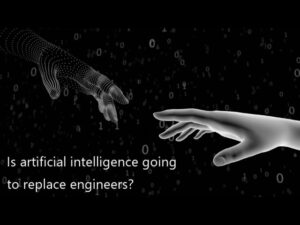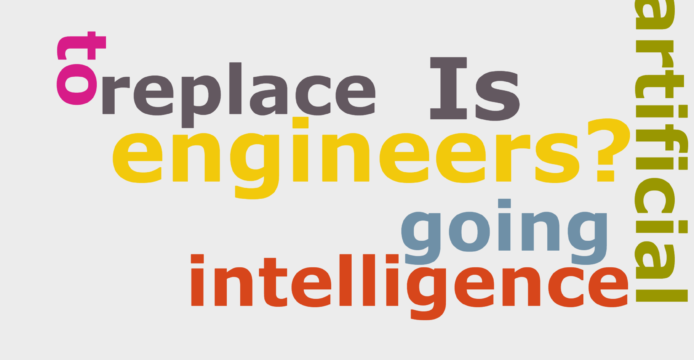Here is another interesting article we felt like sharing with you in order to request for your feedback/comments. Is artificial intelligence finally the key factor of a dramatic change in the exercise of our professions? A threat for their future? Or maybe an opportunity? The article was published on imeche by Tereza Pultarova.
 “The artificial intelligence (AI) program was able to produce pieces of writing indistinguishable from those created by quite skilled human writers.
“The artificial intelligence (AI) program was able to produce pieces of writing indistinguishable from those created by quite skilled human writers.
Many asked whether the emergence of such programs spelled the end of journalism as a human profession. There are other disciplines previously reserved for talented humans that today’s AI can comfortably tackle. It can write songs that mimic the sound of famous pop stars or create paintings in the style of great masters of the past.
In engineering, architecture and design, a new type of AI-based software emerged, capable of creating a multitude of solutions to a problem in a short period based on predefined criteria. The components that AI designs today are so far of a rather basic nature – brackets, housings, forks, support structures.
The goal is to help engineers work faster and make them more efficient, according to Paul Haimes, vice-president at digital services and Internet of Things company PTC, which develops generative design solutions. But what is going to happen next? “Generative design builds on the heritage of CAD but takes away the iterative process from the desktop of the engineer and puts it into the cloud environment,” says Haimes. “We are allowing the computer to do the iterative work that previously would have been done by the engineers. The engineers get a range of options to choose from, but it’s still the engineer who is making the decision.”
Haimes says that, thanks to the speed at which the computer produces the iterations, the resulting product is better optimised. That leads to cost reductions, greater reliability and streamlined manufacturing. “It’s not an automated process, it’s assisted,” says Haimes. “In the future, we will continue to include more and more design goals, but there will always be a role for the engineers. We are not replacing them.”
Who will survive?
The World Economic Forum has been following the evolution of AI for many years. According to the forum’s 2020 Future of Jobs report, new opportunities spawned by the expected growth of the AI industry will eventually outnumber the jobs that will be lost. But the forum’s head of AI and machine learning, Kay Firth-Butterfield, agrees that not all technical professions will be spared.
“It’s getting much more important to get into more complex roles because the computers will be more and more able to do the basics,” says Firth-Butterfield. “There will always be opportunities for people who have PhDs, people who are thinking about new ways of developing tools or starting businesses that will use AI to solve various problems. Those jobs will survive. Jobs that involve basic coding probably not so much.”
Ultimately, Firth-Butterfield believes, AI will usher in the “golden age” when engineers will be able to focus on “the fun things, and the AI will support them”.
Mark Girolami, professor of civil engineering at Cambridge University, and the Royal Academy of Engineering research chair in data-centric engineering, shares the excitement. “Some jobs will disappear, but new ones will emerge,” says Girolami.
“Forty years ago, we needed draughtsmen to draw technical drawings. That’s all automated now. But we now need a lot of software developers and engineers who are freed from drawing and copying and able to consider the more high-level issues. Jobs transform in response to what’s going on societally and that’s good. It’s going to make society safer and jobs more fulfilling.”
Girolami, however, cautions that the profession cannot sit around and wait for things to change. It must proactively prepare for the AI-driven future and make training in data-centric sciences a cornerstone of engineering education.
Slower Progress
Girolami and Firth-Butterfield agree that, one day, AI will get so good that it will be able to take over the creative design process completely. It will be able to further develop itself, making all data scientists who train and develop it today redundant. But this moment still seems quite far in the future.
“Deep learning is incredibly powerful for very specific problems, it’s good for simple, very constrained types of designs. But for the more generic, mental-level problems such as creative design, there is still quite a way to go,” says Girolami. “When I was at university, everybody was talking about AI doing this and that, but it still hasn’t happened. We have moved closer to it. It will happen at some point. But whether that will be in 10 years or 30 years, that’s difficult to say.”
Firth-Butterfield agrees that the pace of progress doesn’t match the expectations. The World Economic Forum predicted only a few years ago that the profession of truck driver would soon become obsolete because of autonomous vehicles. The task to automate driving, however, proved more challenging than expected.
“We used to think that lorry drivers would soon be out of work, but it is proving much harder to do even on the sort of roads that we have in America, which are much easier for autonomous vehicles to navigate than, for example, streets of London,” says Firth-Butterfield. “The promise of AI is there, but we still have a number of nuts to crack to say this is going to be fully autonomous.”
The slow progress, says Firth-Butterfield, is largely owing to the shortage of computer scientists capable of developing AI algorithms and training the machines. Ironically, she adds, to become an AI developer may not be the safest career choice. “Now, we need to educate a lot of people because we need a lot of people to do the work,” she says. “But come 2030, 2040, those people are all going to be looking for new jobs because AI will be able to do their job itself.”
Reluctant adopters
Haimes doesn’t expect AI to overtake the engineering sector any time soon. In fact, he says, despite engineers’ propensity for new technology and assumed geekiness, the profession might be among the last to embrace this innovation.
“Engineers are very data-driven people, they want to know whether the technology has been proven to work,” says Haimes. “They want to be able to understand what’s happening in the background and whether they can trust the system. They are not going to commit to it unless they have a full evaluation of how it works and it’s proven that it’s successful.”
The engineering community is particularly concerned about the fact that current AI applications run in the cloud, adds Haimes. The companies don’t have control over the systems and data centres and prefer not to take security risks with their intellectual property.
“Engineering and manufacturing is probably one of the last industries to truly embrace cloud,” says Haimes. “That will change over the next five to 10 years. And that’s also the timeframe in which I expect generative design to really get into the mainstream adoption phase and become embedded in most CAD applications.”
When it comes to the future of AI, Firth-Butterfield believes that it is in the hands of the humans who are developing it today. AI doesn’t need to replace musicians, writers, painters or engineers if humans don’t want it to.
“Technically, AI will one day reach the point where it can replace engineers, designers and architects,” she says. “But it’s up to us to decide what we want to use it for. And I suggest we should focus on using it on solving some really painful issues that we face, such as curing diseases, rather than taking away the jobs of engineers, architects or journalists.”

